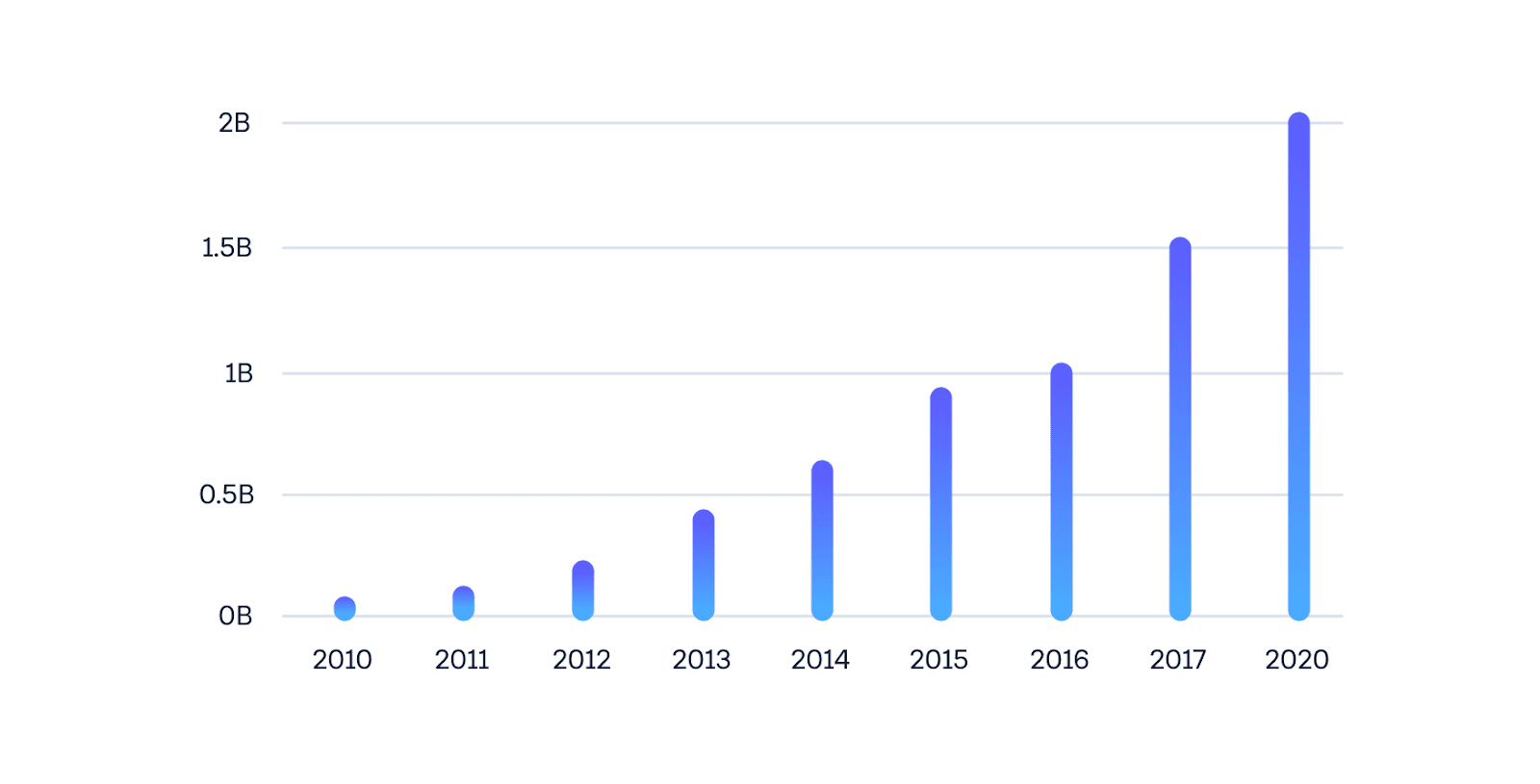The rise of conversational marketing
Shrinking budgets, difficulty tracking customers due to evolving privacy regulations, and ever-rising consumer expectations. These are some of the macro trends we expect will affect Marketing in 2023.
Category
Published on
Introduction
Shrinking budgets, difficulty tracking customers due to evolving privacy regulations, and ever-rising consumer expectations. These are some of the macro trends we expect will affect Marketing in 2023.
Do any of these trends resonate with you? Maybe all of them?
Then it’s probably time to consider the potential of conversational marketing. Conversational marketing is making it easier for consumers to engage with brands, and for businesses to have better insight into customers' needs and preferences.
In a world where 61% of customers consider messaging businesses more convenient than picking up the phone, and 59% choose it over email, the movement towards messaging as a customer communication channel is becoming too big to ignore.
Take the 800-pound gorilla, for example. In its Q2 earnings call, Meta reported that more than 3 billion people use a Meta messaging product—Instagram, Messenger, and WhatsApp—every month. WhatsApp, the world’s most popular messaging app, sees 2 billion active users each month.

WhatsApp monthly active user figures Source: Backlinko
These changes spell out the need for businesses to use technology to better understand their customers and communicate with them easily and efficiently. Conversational marketing will allow businesses to offer personalized assistance and immediate responses to customers, as well as proactive support and targeted recommendations.
So what makes conversational marketing work so well?
Time is of the essence
People want instant gratification. They don't have the time or patience to wait for a response. 90% of them want immediate responses when they have a customer service question, which more than half of people consider to be ten minutes or less.
The key is to make sure that your business is set up in such a way as to be able to respond quickly and effectively, and conversational marketing platforms enable this.
Build better customer relationships
Reacquiring a customer every time can be costly. Instead, build long-term relationships with them and make sure they’re engaged throughout the entire journey.
By establishing an open dialogue, you create a conversation that reflects each customer's needs. And by using opt-ins, you can gain consent at every interaction and each time your customer shares information with you.
You can then use that information to build richer customer profiles and build out personalized relationships. Your customers are more likely to keep coming back if they feel they’re part of a conversation. Not just as a sales call.
Conversation enhances engagement
Conversational marketing allows you to engage customers at every stage of the customer journey. It can be used to create rich experiences that go beyond marketing and advertising. And customers want the ability to message businesses throughout their entire journey.

When customers are in the discovery stage, you can use it to help them find the right product. If they’re in the consideration phase, you can provide additional information and recommendations that will help them make an informed decision because 83% of them will ask about a product or service in this stage. And if they’re ready to purchase — which 75% will be — you can guide them through the checkout process quickly and easily with a few clicks.
Channel performance
When compared to other marketing channels, conversational marketing has shown impressive results. For example: Matahari, a leading Indonesian eCommerce platform, ahieved a 2.5x conversion rate across tens of millions of messages using WhatsApp as a conversational channel to share promotions.
There’s potential to use conversational marketing’s high conversion rate to improve the performance of your digital ads. By using click-to-messaging ads, you can drive customers to a more personal (and effective) interaction.
And, of course, messaging directly into your conversational channels means you don’t have to pay for ads (or at least not spend as much on ads).
Richer interactions
Alongside a speedy response, using different channels opens the door to rich media content. These can include videos, podcasts, chatbots, and other interactive formats.

The more questions your rich media can answer, the better. When using a messaging platform, offer suggestions with buttons to guide the conversation before pushing right to a human being.
You can also customize your conversational workflows, with buttons to guide the conversation and the option to escalate to an agent or sales rep at the right time.
This benefits both the customer and the business: customers get quick answers to their questions, and marketers can collect data to build richer profiles for more personalized interactions over time.
Stop being transactional — start being personal
The takeaway here is clear: to drive customer loyalty and increase sales, you need to prioritize conversation-based marketing.
By integrating your messaging channels with conversational marketing, you can create a personalized experience for each customer and help develop relationships that will last for years.
And the results are worth it.
Messaging interactions with customers helps build relationships, reduces customer service wait times, establishes better two-way communication, and ensures customers’ privacy.
Whether you’re an eCommerce store, a streaming service, or another type of business, don’t underestimate the power of conversation. Make sure your customers have the opportunity to communicate with you and utilize conversational marketing to keep them engaged, loyal, and coming back for more.
Ready to adopt conversational marketing for your own company? Read on to see how other companies are tapping into its potential.
As always, feel free to reach out if you have any questions or if you are looking for help setting up your use-case.
Ready to see Bird in action?
